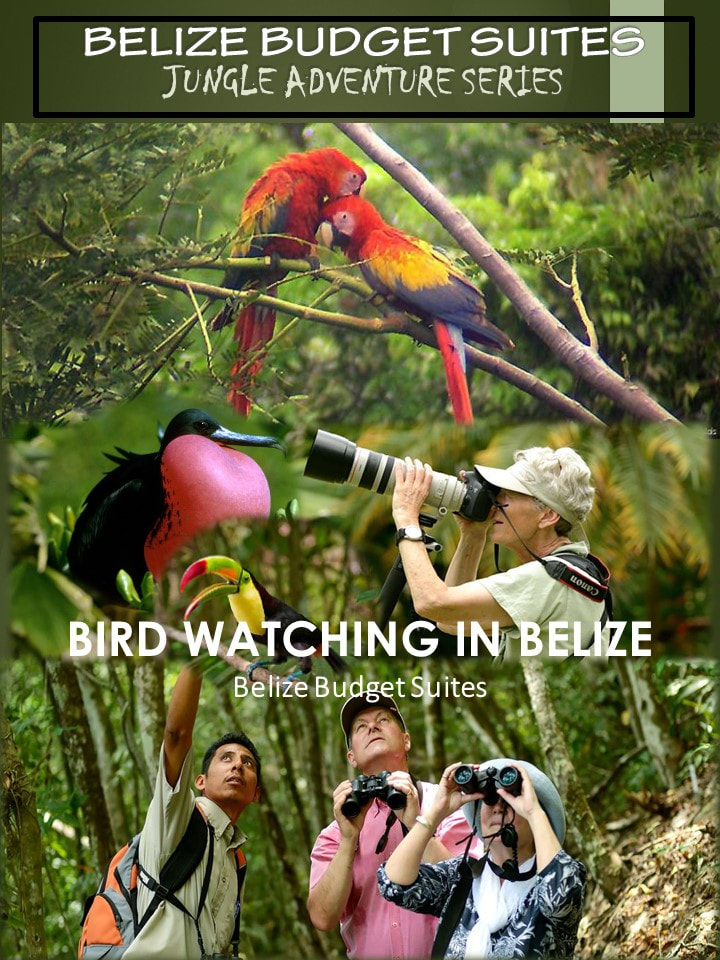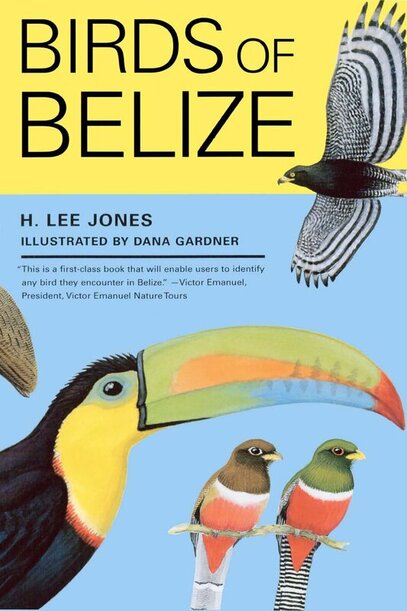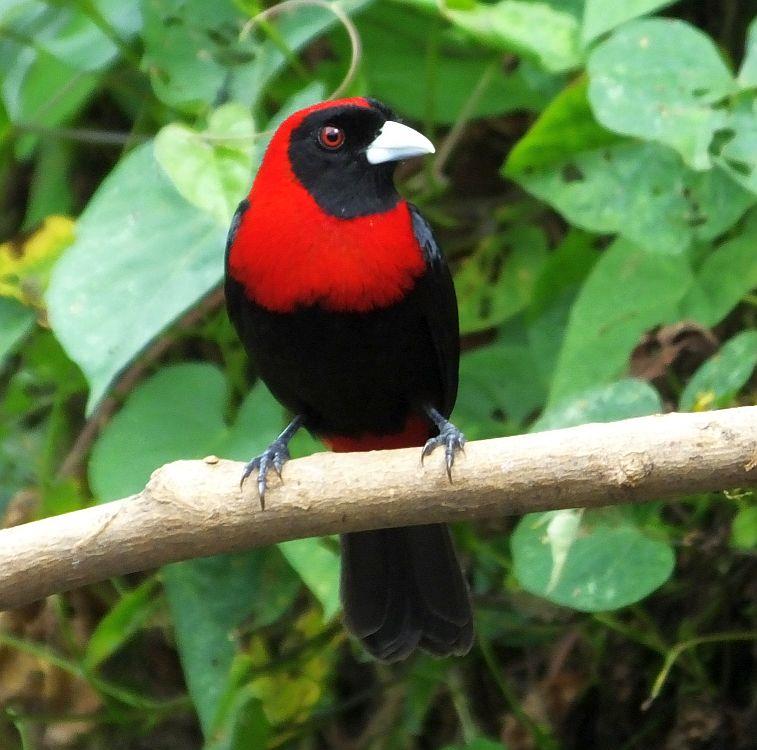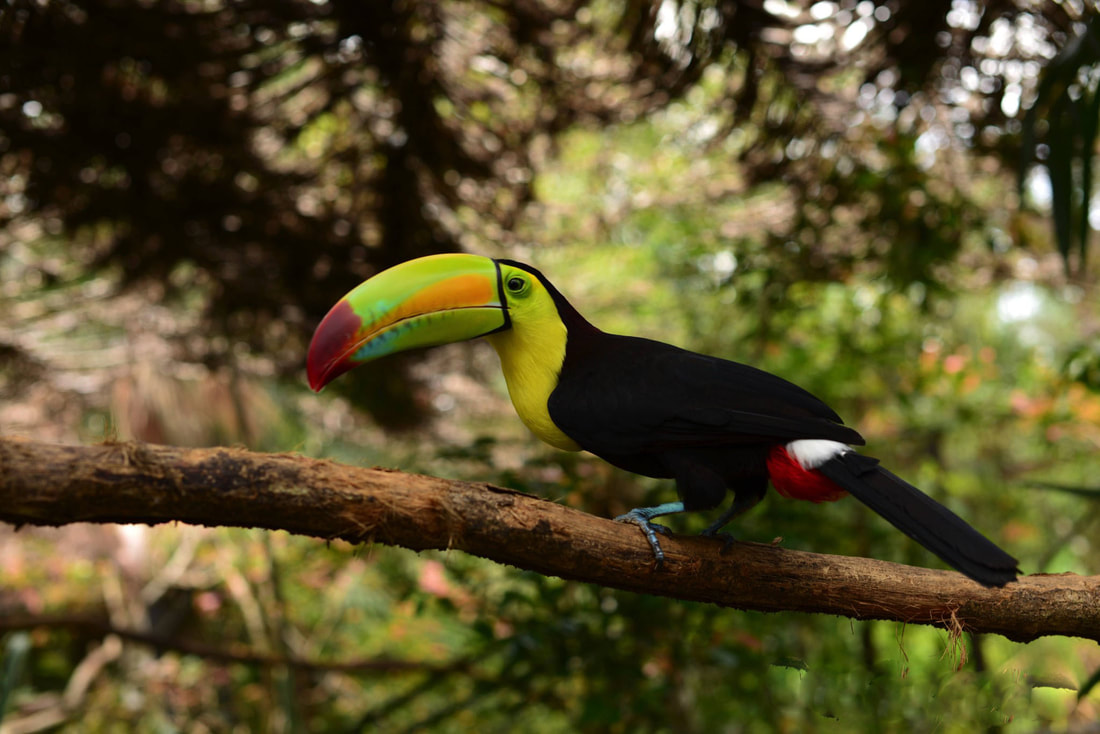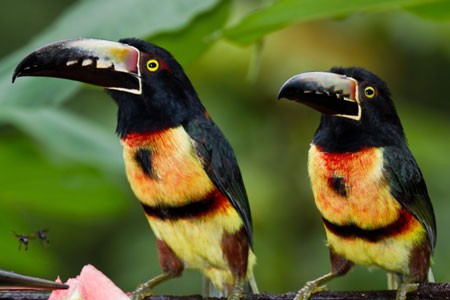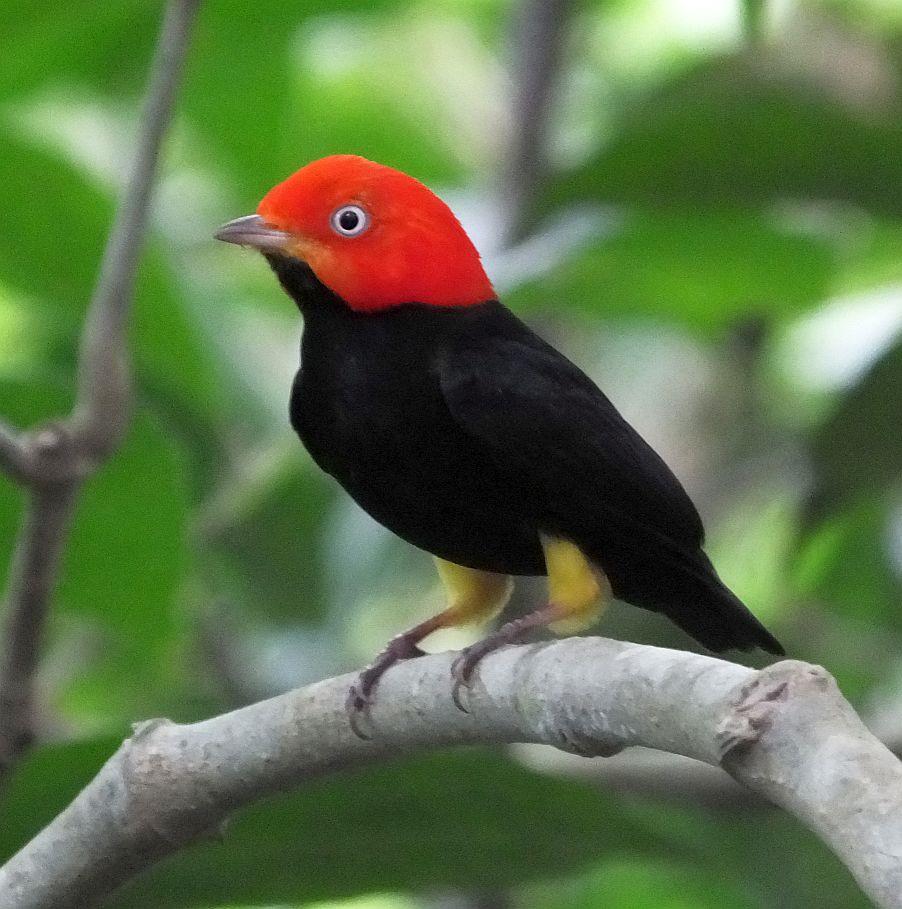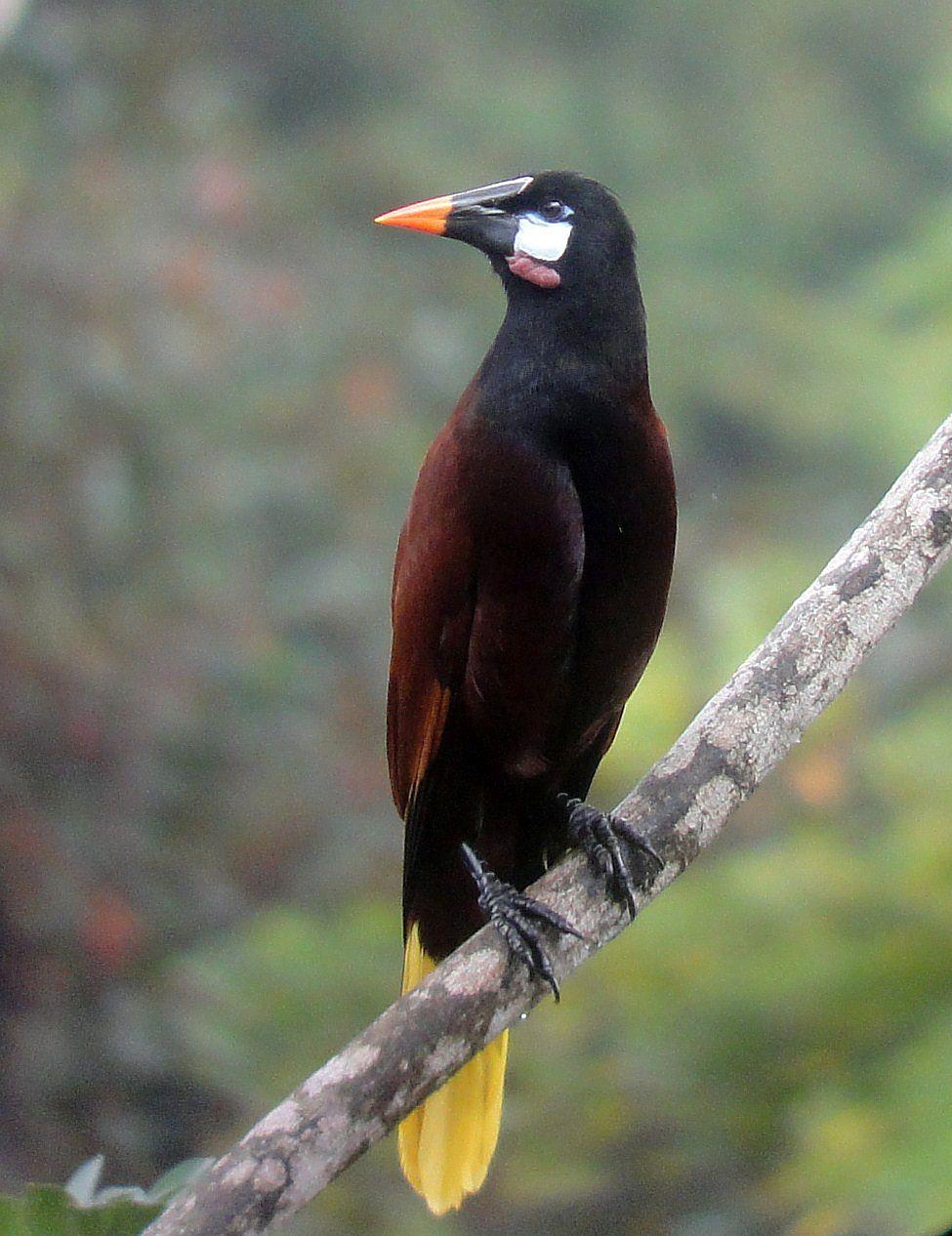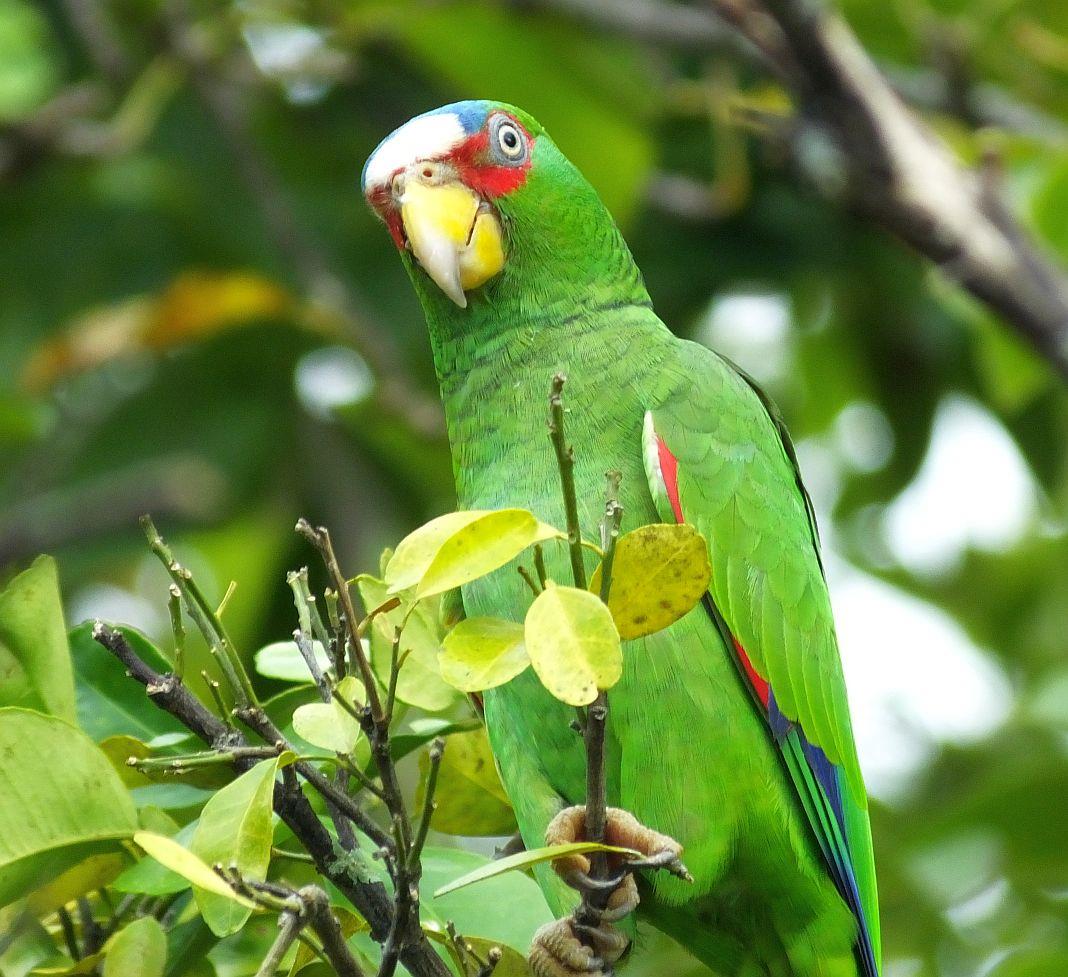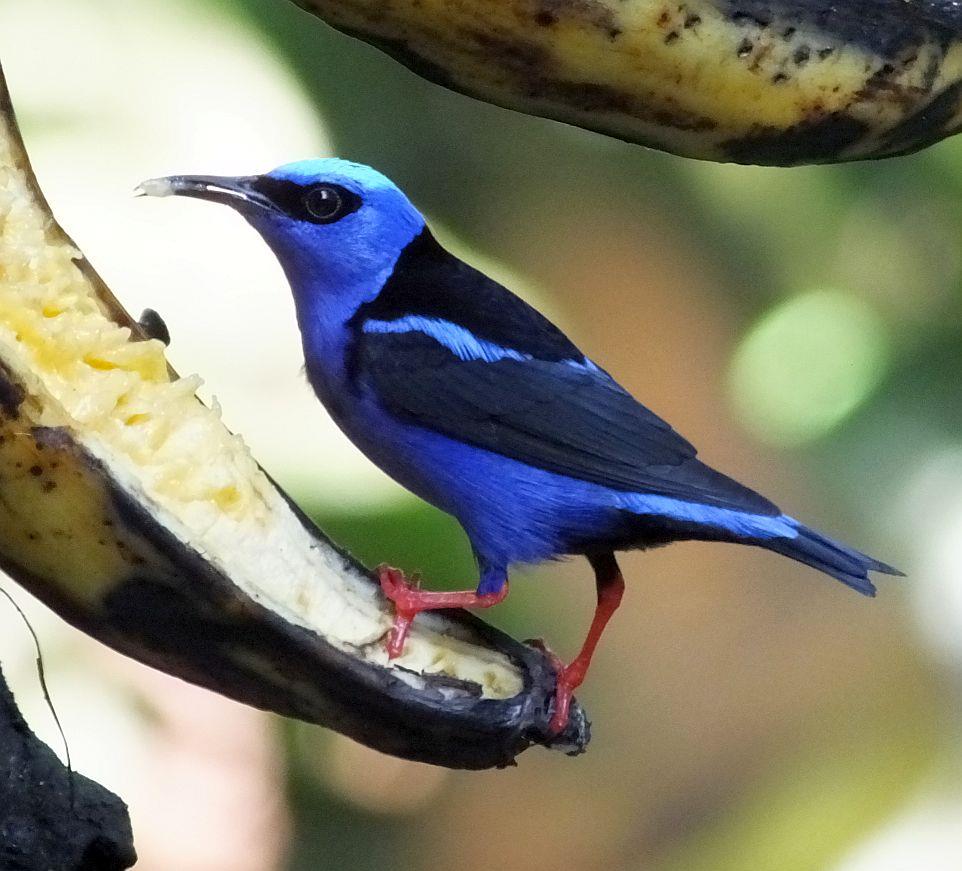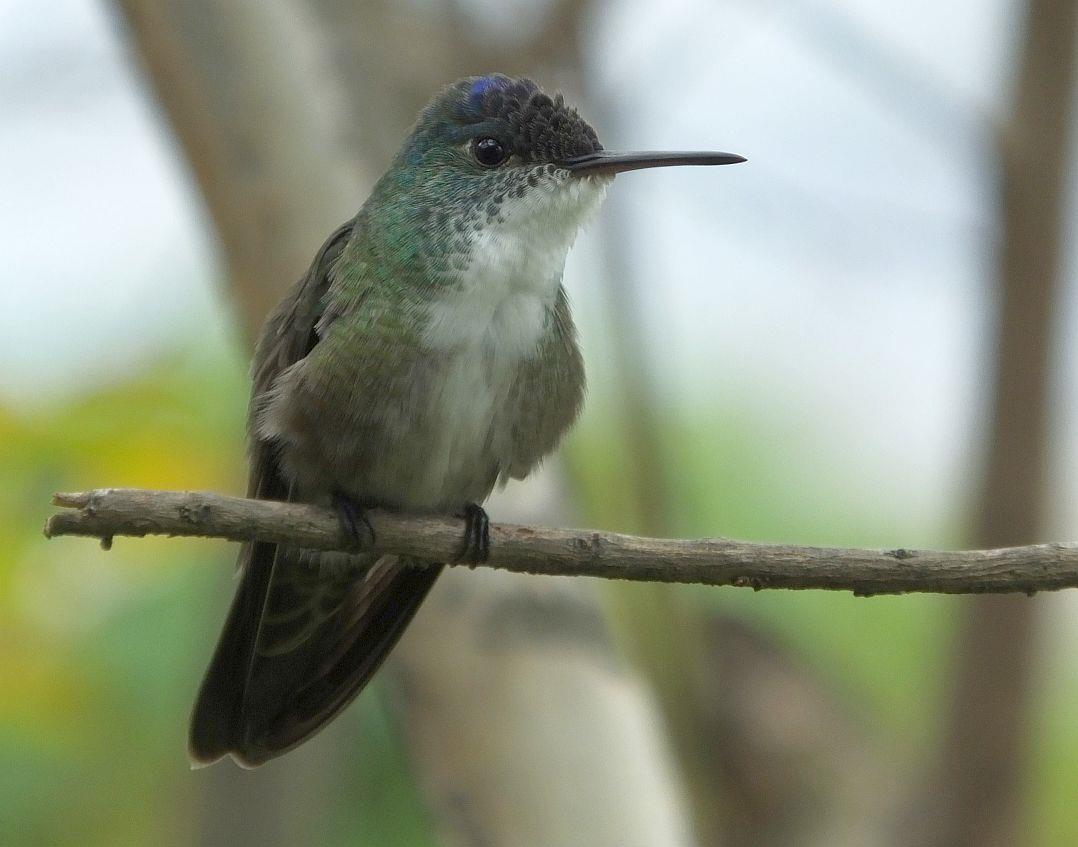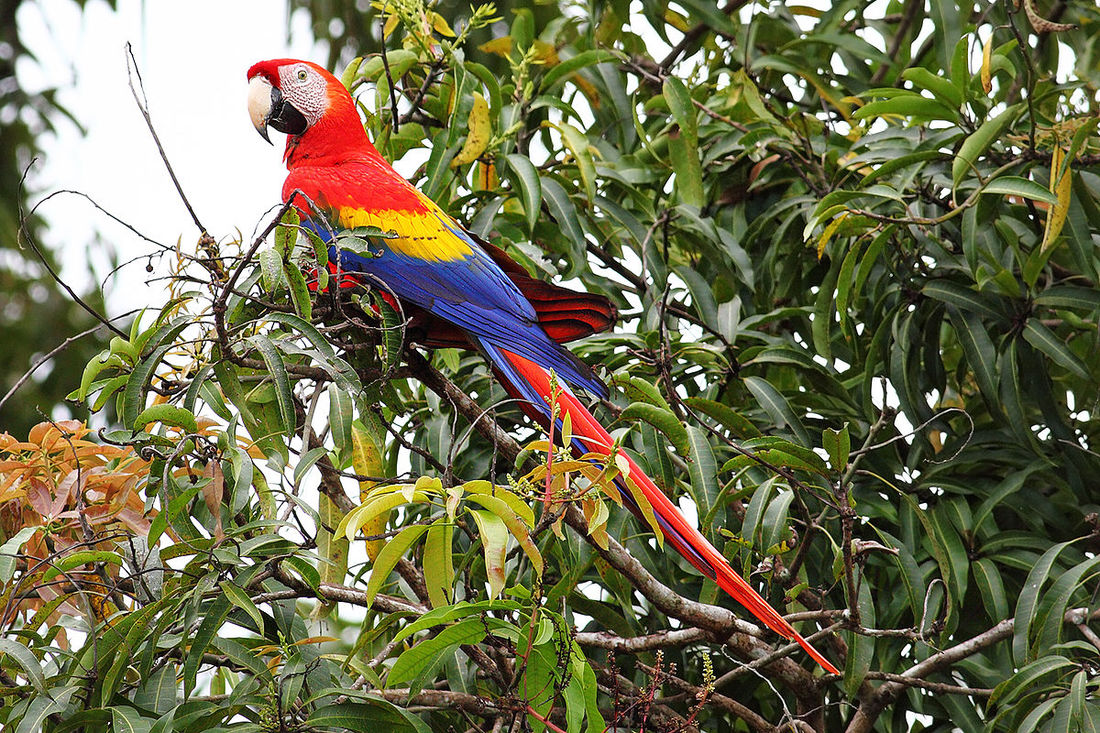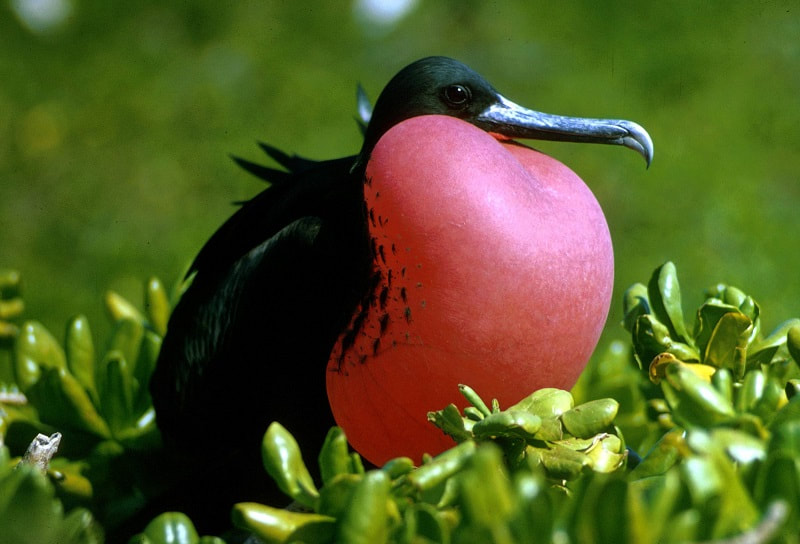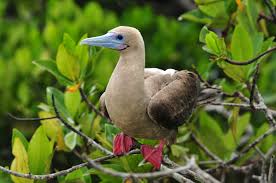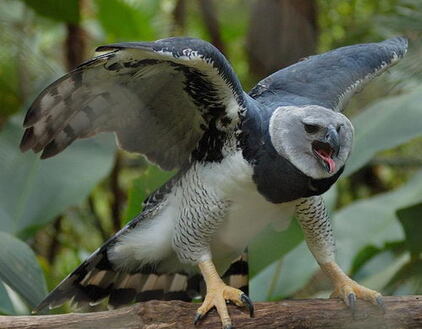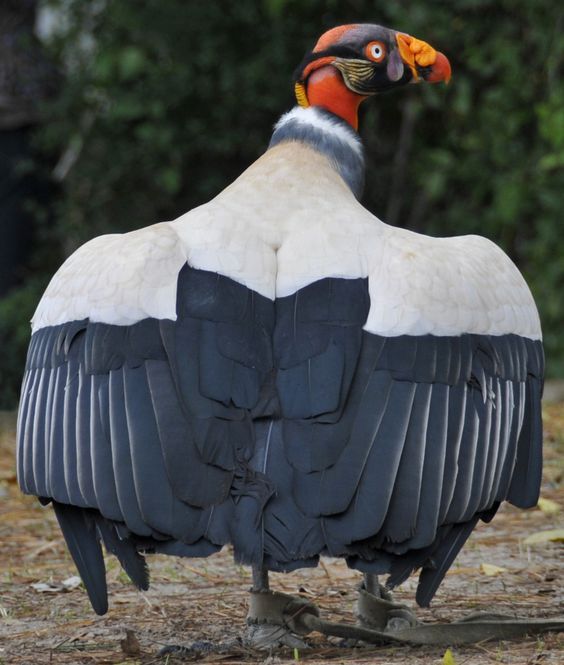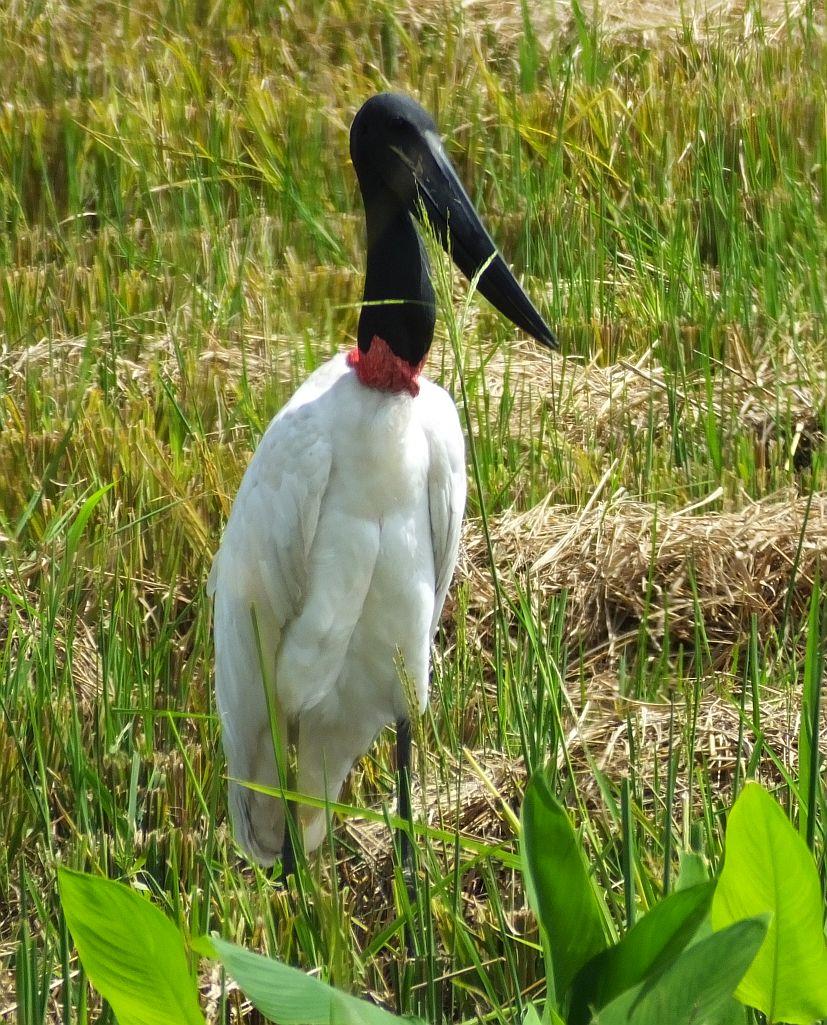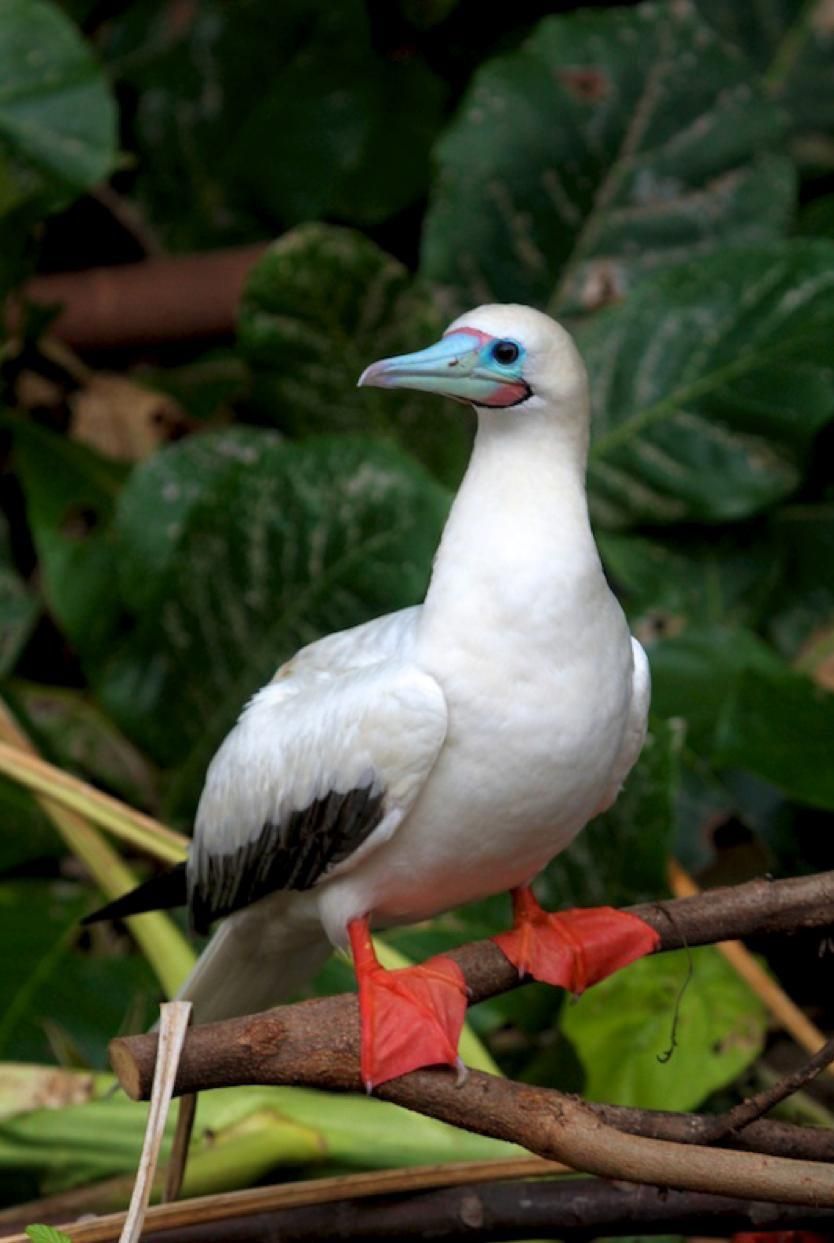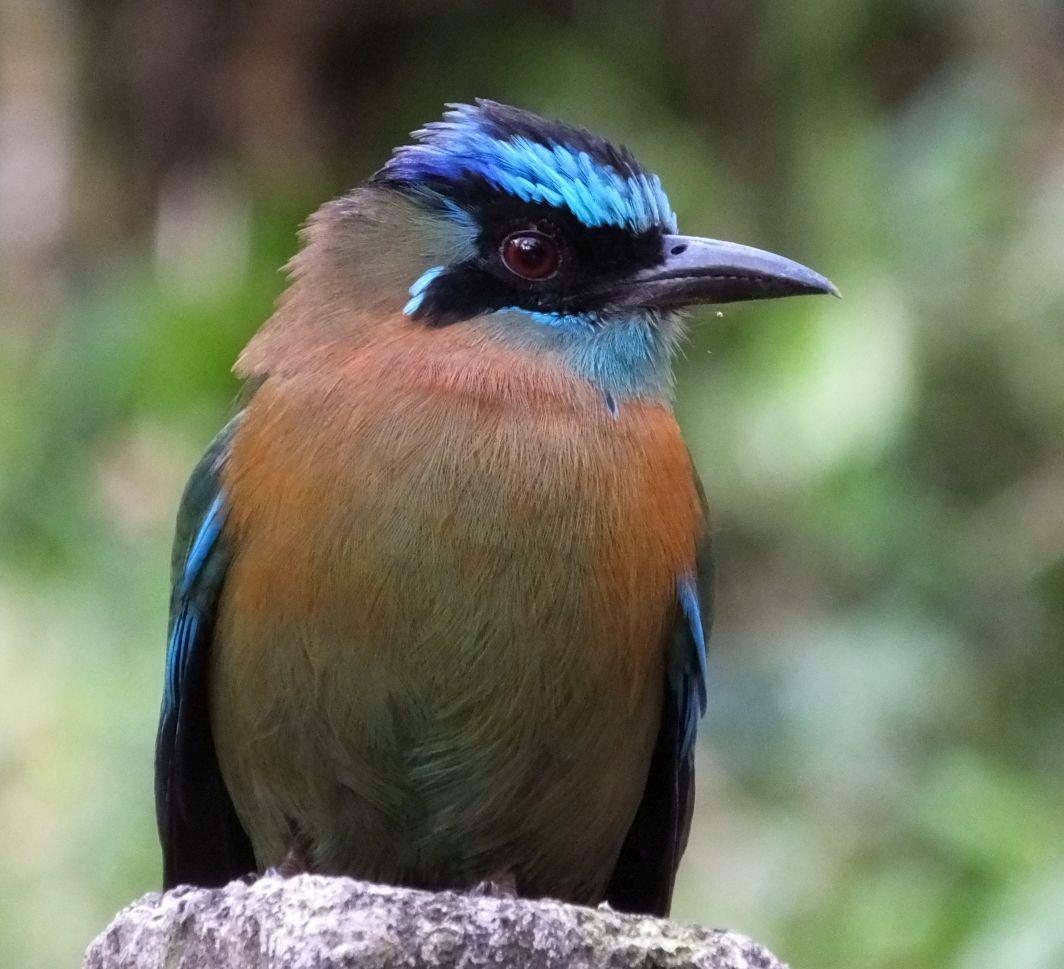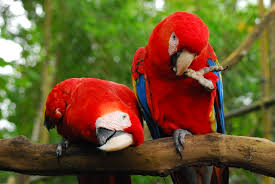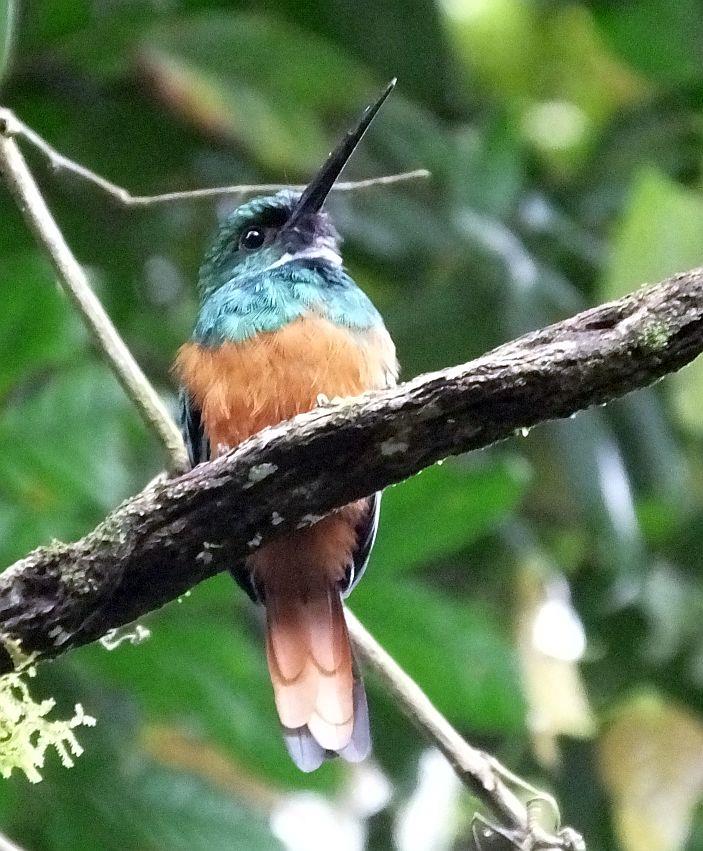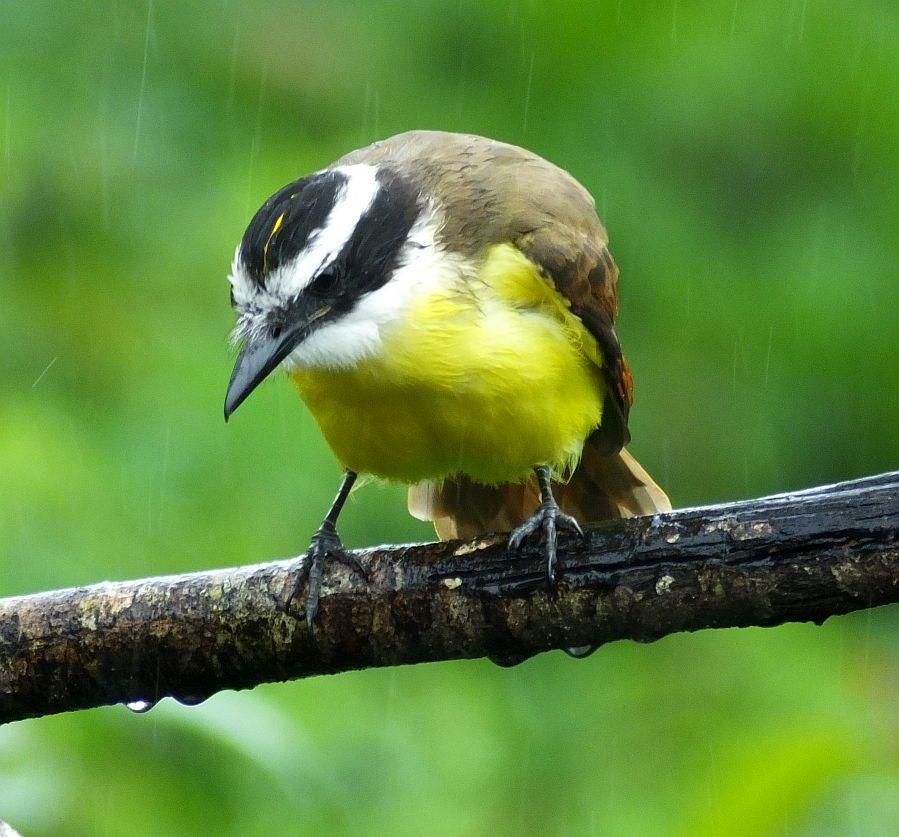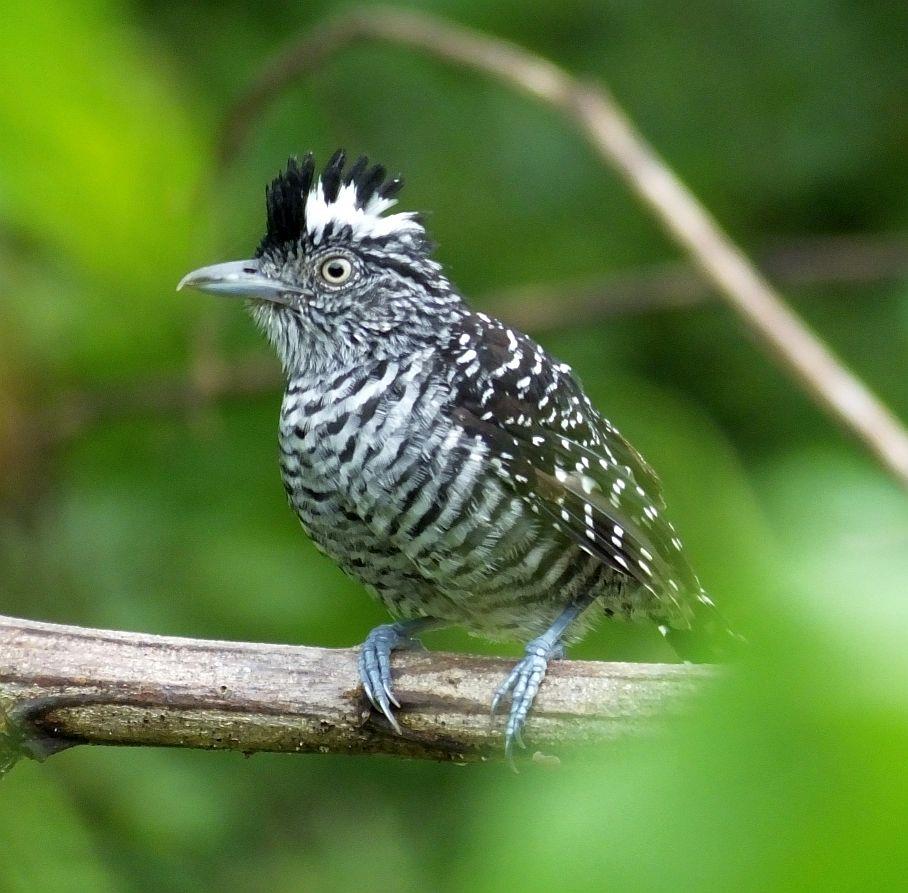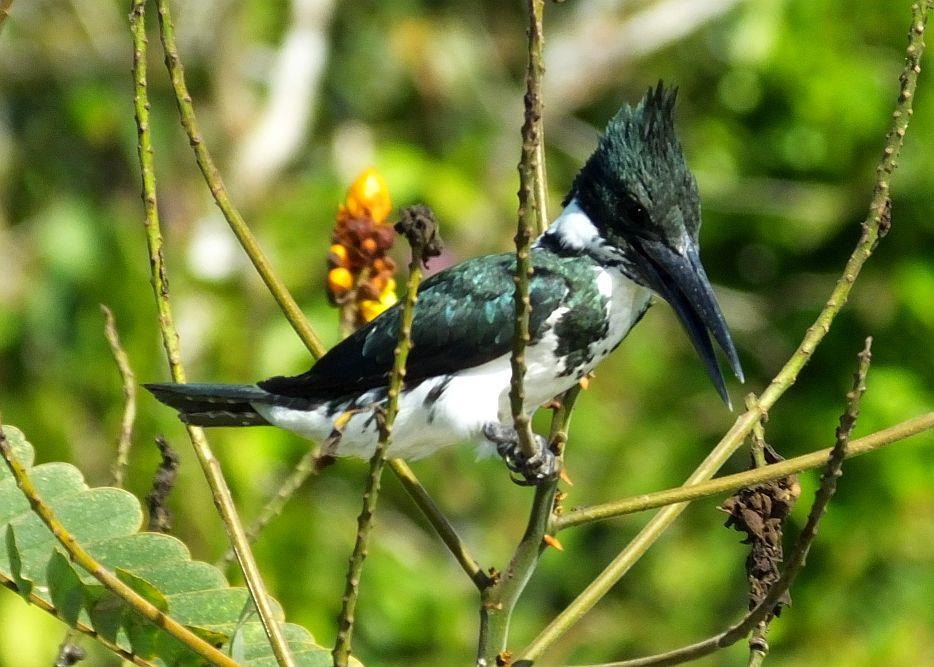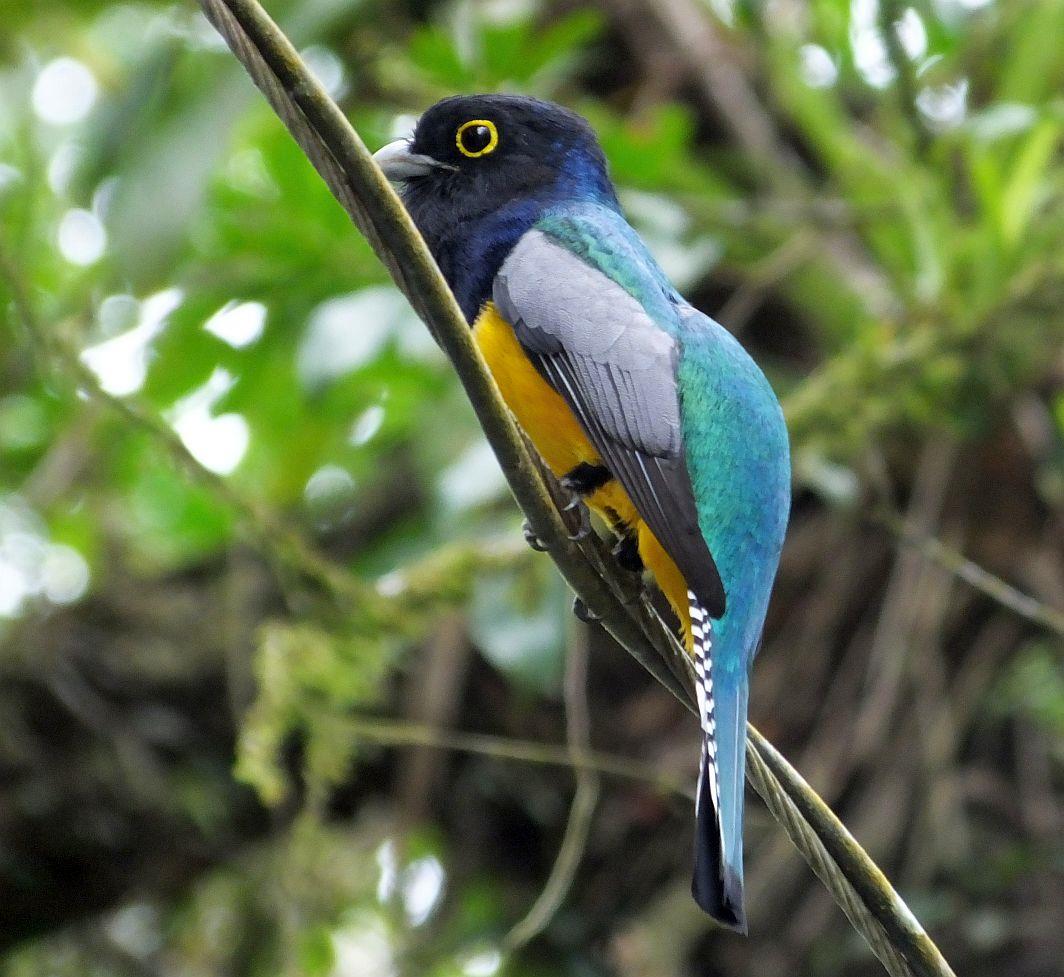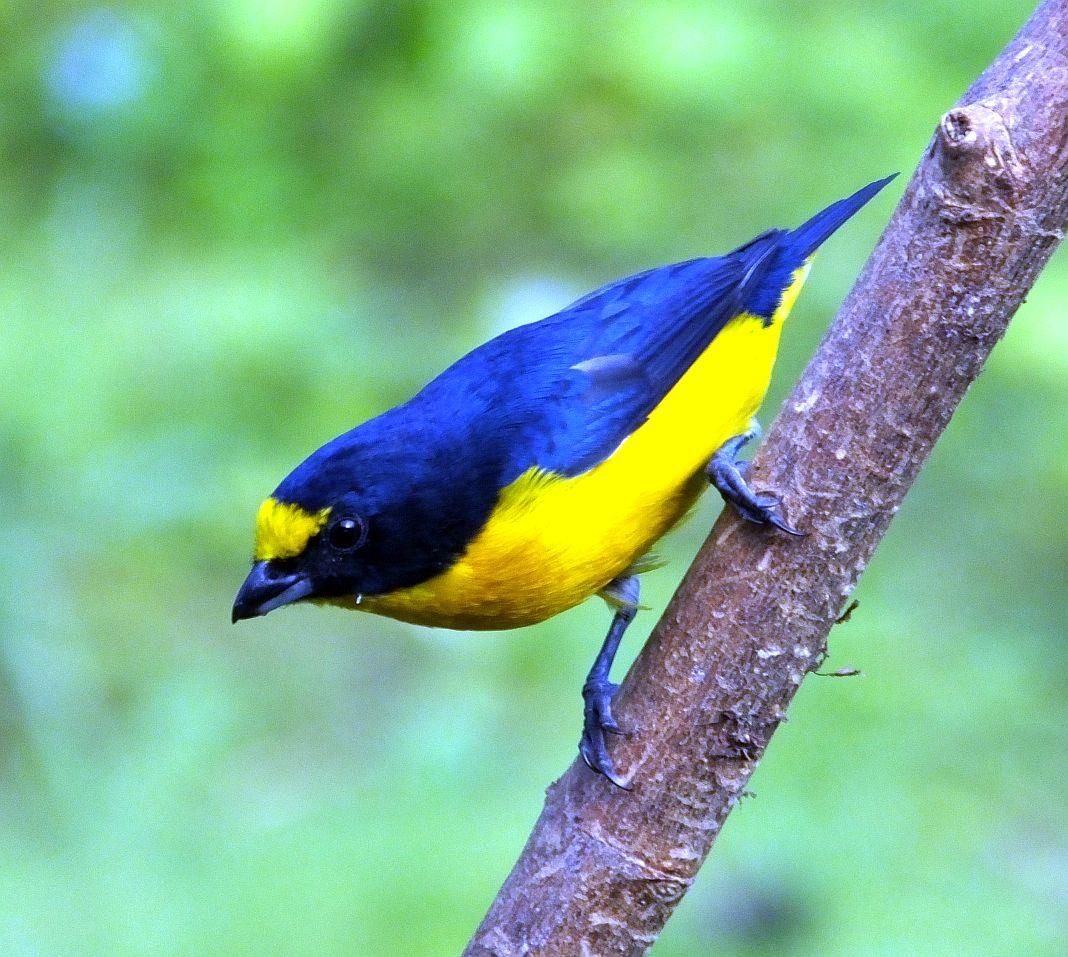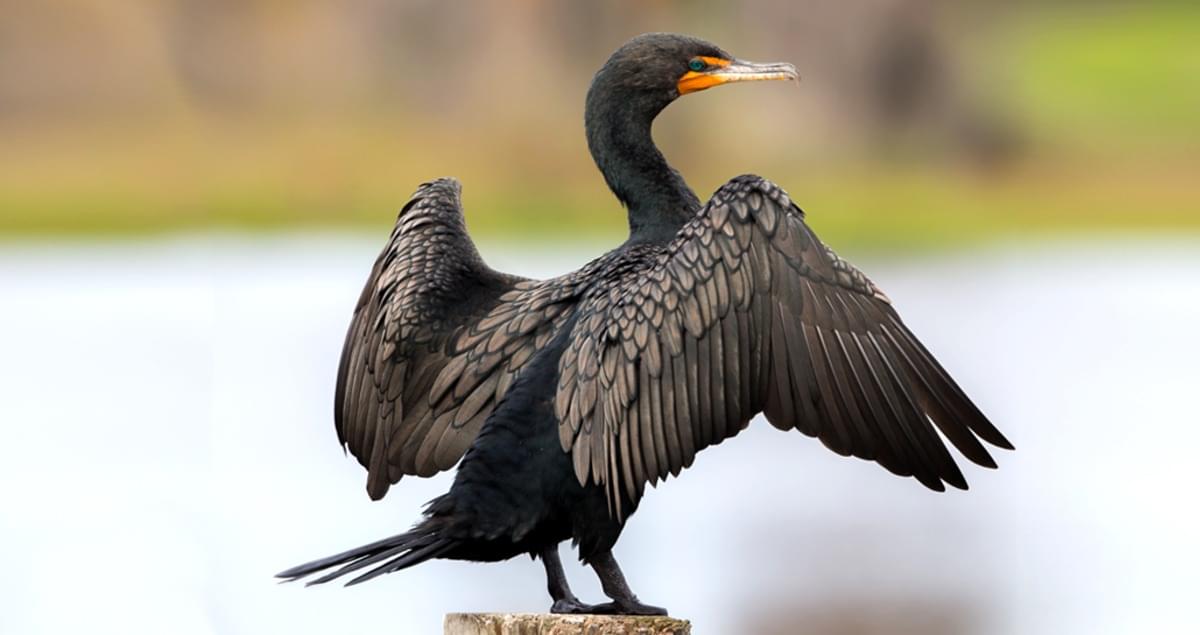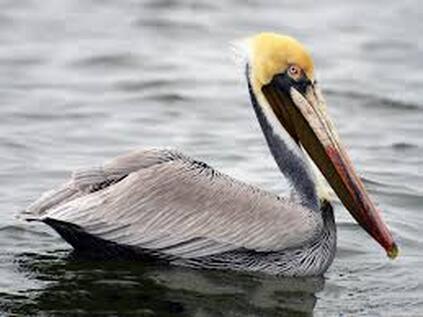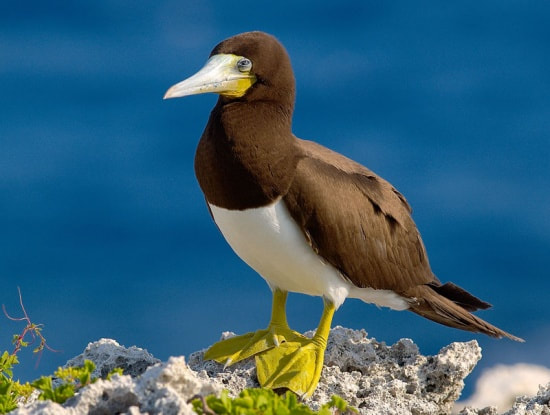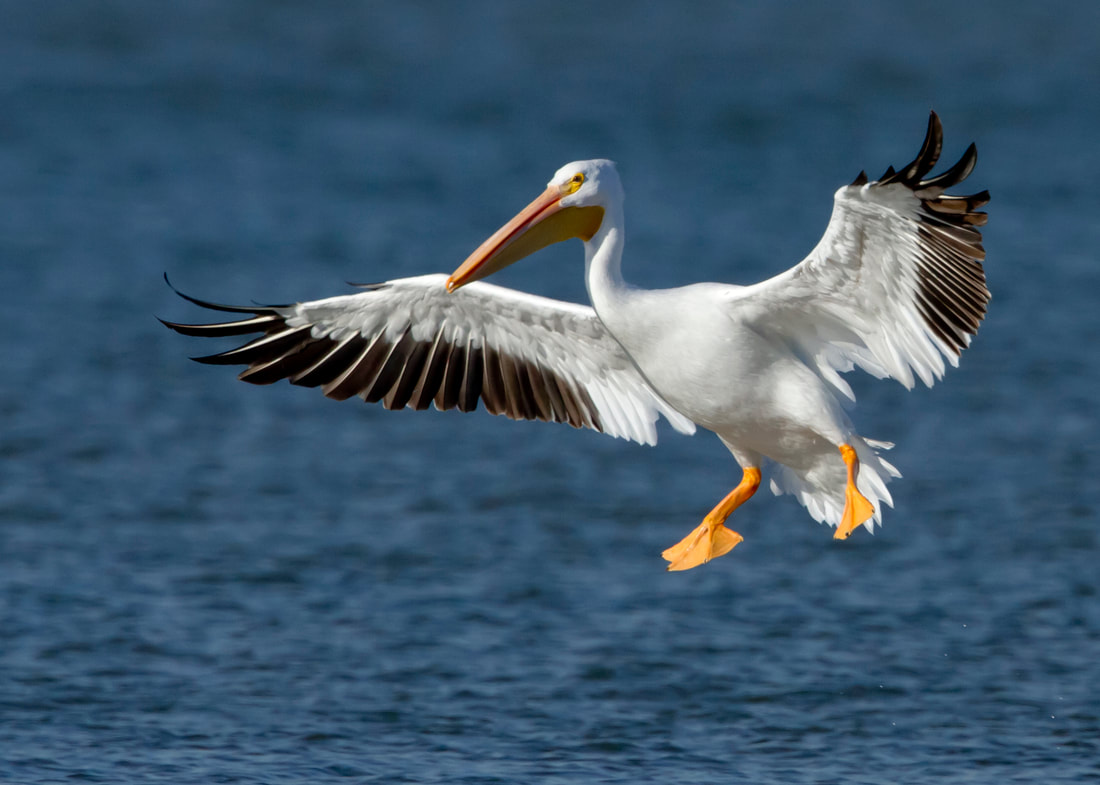There are over 593 different species of birds in the country of Belize
|
With over 593 different, colorful species of birds in the country, Belize is a must for the professional or amateur bird-watcher and those into eco-tourism. In the Orange Walk District alone, over 400 species of birds have been recorded. Of these, approximately 20 percent are migrants from North America during the winter season. Almost every year new species are reported. Eight new records were confirmed in 2009, including the Crested Caracara, Canada Goose, and Spot-breasted Oriole.
The Blue-crowned motmot, (Motmotus motmota), can be seen throughout the country. Its habitat is in the rainforests below the canopy, or top, of the rainforest. The length of the Blue-crowned motmot is between 11 and 18 inches (28-45 cm). This length includes the tail. The one feature that most distinguishes almost all motmots is their long tails. Close to the tip of the tail, the barbs are missing for about one inch or more. This gives the appearance not unlike that of a tennis racket. The only explanation for the feathers being like this is that they are used for display. More so than anywhere else in the country, the Orange Walk District is the country’s leader as a birder’s paradise. With its unusually diverse habitats, the famous Maya Ruin area of Lamanai is a must for professional ornithologists or casual bird watchers. 366 bird species have been recorded at Lamanai, and this figure is expected to reach 409 shortly The uncommon nocturnal Yucatan nightjars, as well as the long-tailed hermit hummingbird, have been spotted at the Lamanai Outpost Lodge. Cruising the New River by boat to the Lamanai ruins is also a birder’s paradise. The waterway teems with bird life. Rare birds abound, like the roseate spoonbills, sun grebes and long-necked anhinga. Near the mouth of the lagoon is a large ceiba tree with a huge nest, home to a five-foot jabiru stork, the largest bird in the country which has a wingspan of approximately eight feet. Inland jungle resorts offer delights for Belize bird watching. Colors abound: the blue-crowned motmot, the brightly colored flocks of ocellated turkeys or the emerald toucanet are only some of the birds visitors will see. The Collared Toucan, also known as the Collared Aracari, Pteroglossus torquatus, is almost as flamboyant as its cousin the Keel Billed Toucan which is the national bird of Belize. This bird is all over Belize and can be easily spotted as they tend to flock. The Collared Toucan can also be found in Mexico,and South America. They roost socially, usually in groups of about six, and nest in tree holes or abandoned woodpecker nests. They are primarily fruit eaters but will take prey such as insects and small lizards. Programme for Belize, with over 400 recorded species, also offers world class birding. The nonprofit organization with offices in both Belize and the United States, manages the Rio Bravo Conservation and Management Area in the northern district. It is a reserve that covers 280,000 acres. It is a tropical forest area that is home to all of the Belizean cats and numerous other animals, including king vultures, and over 80 species of bats. A Field Guide to the Birds of Belize” by Jones and Gardner will help visitors familiarize themselves with many of the species to be seen. The Gallon Jug Conservation Society, the Belize Audubon Society, the Lamanai Field Research Center or any of the lodges in the area here also appreciate field notes from visitors who record rare, unexpected sightings. The Flycatcher, Great Kiskadee (Pitangus sulphuratus) can be seen all over the country including home gardens and in urban centers. This little fellow is a resident of the City of Belmopan. The Great Kiskadee is aggressive especially in looking for a meal. Bird Watching In Belize – The Easy Way “Watching birds in the tropical forests of Belize can tend to be very frustrating at times, and extremely rewarding at others. The thick vegetation of tropical forests, and the typical behavior of quick, seemingly random movements of many forest birds, make them often difficult to see. Many birds also live in the upper canopy of the forest, making it a strain to be constantly looking upward. But early morning and late afternoon are excellent times to bird watch, as most bird species are feeding or moving to new locations during these times.” “Birds thrive in all of Belize’s habitats. Wading birds congregate along the coastline and inner lagoons. The grasslands and savannas provide seeds for the many finches, and nesting trees for the giant jabiru Stork. And the tropical forests There is an astonishing diversity of bird species.” – The Belize Zoo. |
Birds of Belize
Anis & Cuckoos
Antbirds, Antthrush, Spinetail Blackbirds & Cowbirds Boobies, Pelican, Cormorants Caprimulgios & Potoo Curassows & Quans Doves & Pigeons Ducks Eagles Elaenias & Tyrannulets Falcons & Forest Kites Foliage Gleaners, Leaftossers Flycatchers Gnatcatchers & Jays Grebes & Northern Jacana Gulls Hawks & Osprey Herons, Bitterns Honeycreepers & Euphonias Hummingbirds Kingbirds Kingfishers Manakins, Becards, Tityras Orioles Owls Parrots Plovers Quails & Tinamous Rails & Crakes Saltators & Grosbeaks Sandpipers Seedeaters & Buntings Sparrows & Finches Stilt, Avocet & Oystercatchers Storks, Egrets, Ibises Swallows Tanagers Terns Toucans Trogons, Motmots & Puffbirds Vireos Vultures Warblers Waxwing & Thrushes Woodcreepers Woodpeckers Wren's |
|
|
|
|
|
|



